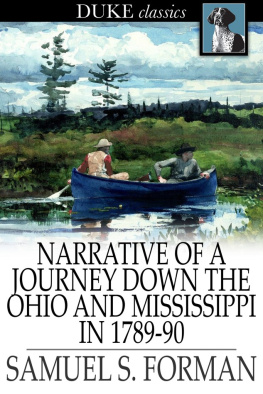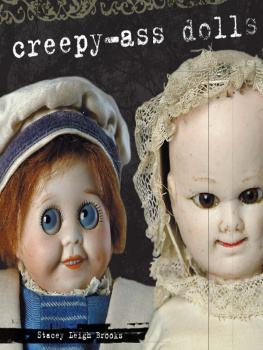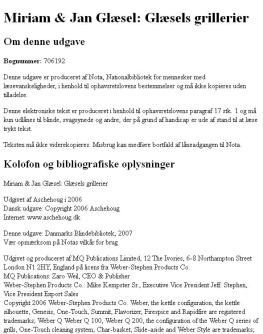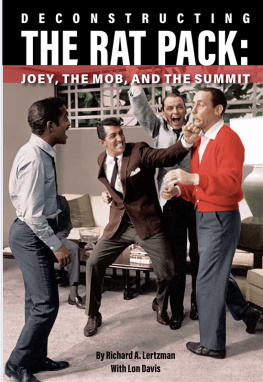DECONSTRUCTING DOLLS
Deconstructing Dolls
Girlhoods and the Meanings of Play
Edited by
Miriam Forman-Brunell
Published in 2021 by
Berghahn Books
www.berghahnbooks.com
2021 Berghahn Books
Originally published as a special issue of Girlhood Studies:
Volume 5, issue 1 (2012)
All rights reserved. Except for the quotation of short passages for the purposes of criticism and review, no part of this book may be reproduced in any form or by any means, electronic or mechanical, including photocopying, recording, or any information storage and retrieval system now known or to be invented, without written permission of the publisher.
Library of Congress Cataloging-in-Publication Data
Names: Forman-Brunell, Miriam, 1955 editor.
Title: Deconstructing dolls : girlhoods and the meanings of play / edited by Miriam Forman-Brunell.
Description: New York, N.Y. : Berghahn Books, 2021. | Includes bibliographical references.
Identifiers: LCCN 2020053968 | ISBN 9781800731028 (hardback) | ISBN 9781800731035 (paperback) | ISBN 9781800731042 (ebook)
Subjects: LCSH: DollsSocial aspects. | PlaySocial aspects. | Girls. | Sex role in children
Classification: LCC GN455.D64 D44 2021 | DDC 688.7/221dc23
LC record available at https://lccn.loc.gov/2020053968
British Library Cataloguing in Publication Data
A catalogue record for this book is available from the British Library
ISBN 978-1-80073-102-8 hardback
ISBN 978-1-80073-103-5 paperback
ISBN 978-1-80073-104-2 ebook
Contents
Miriam Forman-Brunell
Lisa Marcus
Hannah Field
Molly Brookfield
Frederika Eilers
April Rene Mandrona
Rebecca C. Hains
Jennifer Dawn Whitney
Janet Rosemarie Seow
Preface

Deconstructing Dolls: Girlhoods and the Meanings of Play features the research of pioneering scholars whose ground-breaking work on dolls first appeared in a special issue of Girlhood Studies: An Interdisciplinary Journal. While serving as guest editor of the journal, I had been struck by the originality of the researchers whose imaginative studies clearly constituted a critical turn in a century of doll scholarship, especially robust since the 1990s. These GenX and Generation Y scholars expanded the focus and widened the range of approaches as they deconstructed dolls that remain fundamental to the construction of girlhoods today. These researchers analyzed the multi-layered realities embodied in Black, Jewish, handmade, paper dolls, among others, and mediated by contradictory ideologies, ideals, discourses and the perspectives of doll producers, consumers, and players. Their theoretically informed work provided new frameworks for the analysis of contending elements embodied in dolls, embedded in the cultures that produce and play with dolls, and encoded in historically-constructed categories of girlhood.
It was these investigations that served as an inspiration for Dolls Studies: The Many Meanings of Girls Toys and Play, a scholarly collection I co-edited for Peter Lang in 2015. That anthology largely featured the work of other scholars similarly examining the making and upending of the racial, ethnic, national, religious, sexual, class, and gender ideologies and identities that constitute girlhoods. As for the trailblazing research that first appeared in Girlhood Studies, that remained less accessible to nearly everyone outside of journal subscribers and users. While every special issue of a journal aims to draw greater attention to a particular subject, the republication of the journals original essays in this new book anthology is intended to achieve greater visibility through a wider distribution than the journal issue alone. Our hope is to acquaint a larger and broader audience of students and scholars, collectors and curators, and any one unfamiliar with the multi- and interdisciplinary field of dolls studies, with this significant scholarshipstill on the cutting edge.
Acknowledgments

While studying the new womens history during my senior year at Sarah Lawrence College, I happened to come across previously unexamined documentary sources: a bevy of fashionably-dressed Victorian porcelain dolls. Differing considerably from the plastic dolls I had played with as a girl, the well-heeled, adult-looking China and bisque dolls seemed to be saying something about women and girls, though I knew not what. After spending the rest of the year trying to make sense of the research I had collected, I tried to shelve the project as I had the dolls of my own girlhood. But tried as I might to forget them, the dolls steadfastly refused to be cast aside. It was not long before I finally gave in, accepting that dollsand girlhoodwould not only be the focus of my dissertation but also sustain my profession as professor of history. Having just recently retired, the publication of this book is a deeply satisfying capstone to a career devoted to demonstrating why dolls, girls, and play matter.
I feel enormously grateful for the support Ive received along the way and for this project in particular. I loved working with Claudia Mitchell, Jacqueline Reid-Walsh, and Ann Smith, who provided me with the opportunity to serve as guest editor of a special doll-themed issue of Girlhood Studies: An Interdisciplinary Journal. That experience introduced me to the original scholarship of an up-and-coming generation of dolls studies researchers from whom I learned much and to whom I remain indebted. I am so grateful to Amanda Horn, Associate Editor at Berghahn Press, for her patient persistence and confidence that the essays first published in the Girlhood Journal were well deserving of a wider audience. It has been my pleasure to work with Amanda and others at the press in order to remake this project into a book.
Over the course of my training and career, no one has been more steadfastly supportive than Claude Brunell, my partner in life and love for nearly 40 years now. His sweet devotion has sustained me day in and day out, to use a clich that will surely make my mother cringe when she reads this. For it is my mother, Ruth Formanek, who I owe my greatest appreciation for modelling critically creative ways of seeing, thinking, writing, making and playing. Thank you, Doc.
Introduction
Interrogating the Meanings of Dolls
Recent Innovations and New Directions in Doll Studies
Miriam Forman-Brunell
Introduction
Understanding how dolls, as ubiquitous cultural forms, function in the lives of girls and in constructions of girlhoods is a scholarly endeavor that dates to the dawn of modernity in the U.S. In 1896, G. Stanley Hall, the founder of the child-study movement, a professor of psychology, and president of Clark University, co-authored, A Study of Dolls. Informed by a recent appreciation of childhood and play but uninformed about changing notions of girlhood, A Study of Dolls narrowly concluded that doll play taught girls key lessons in femininity and maternity. Focusing more on race than gender more than forty year later, Mamie Phipps Clark, then a Masters student in psychology, utilized both Black and white dolls to study the effect of racial discrimination on the identities of African American children. The subsequent doll studies she conducted with her husband, Kenneth Clark, played a prominent role in the 1954 landmark desegregation decision,
















